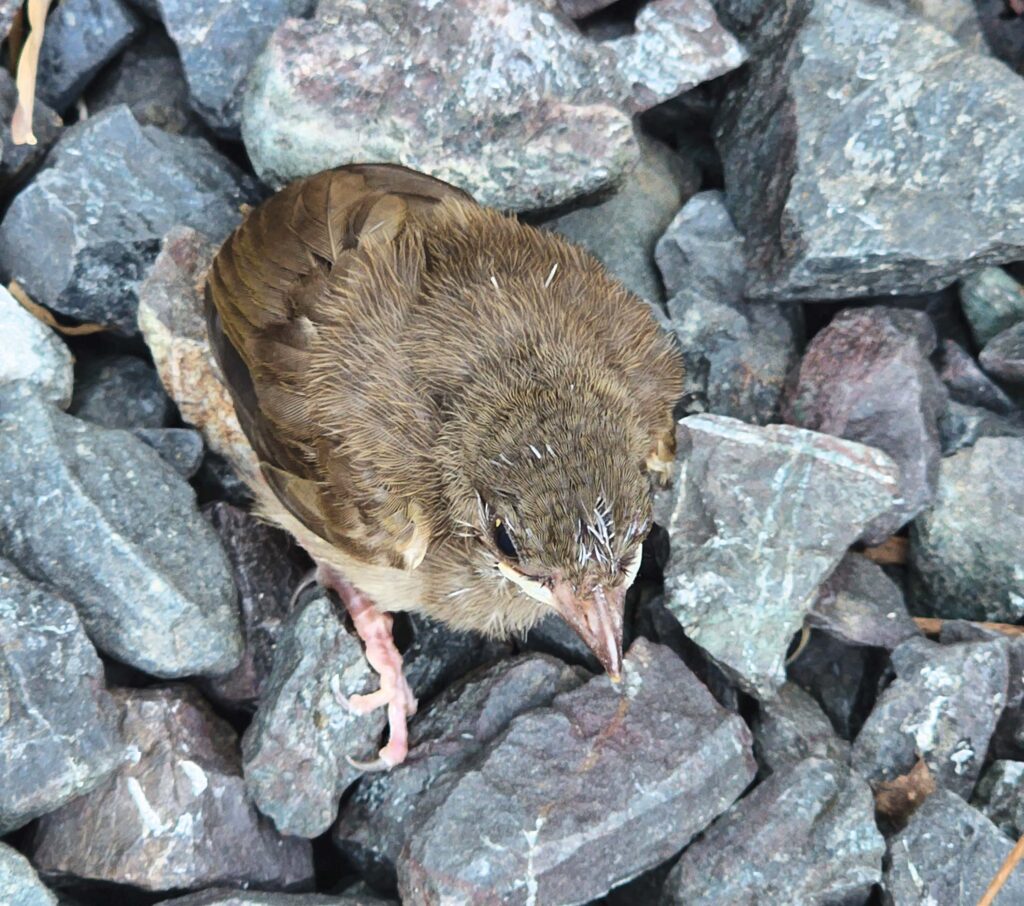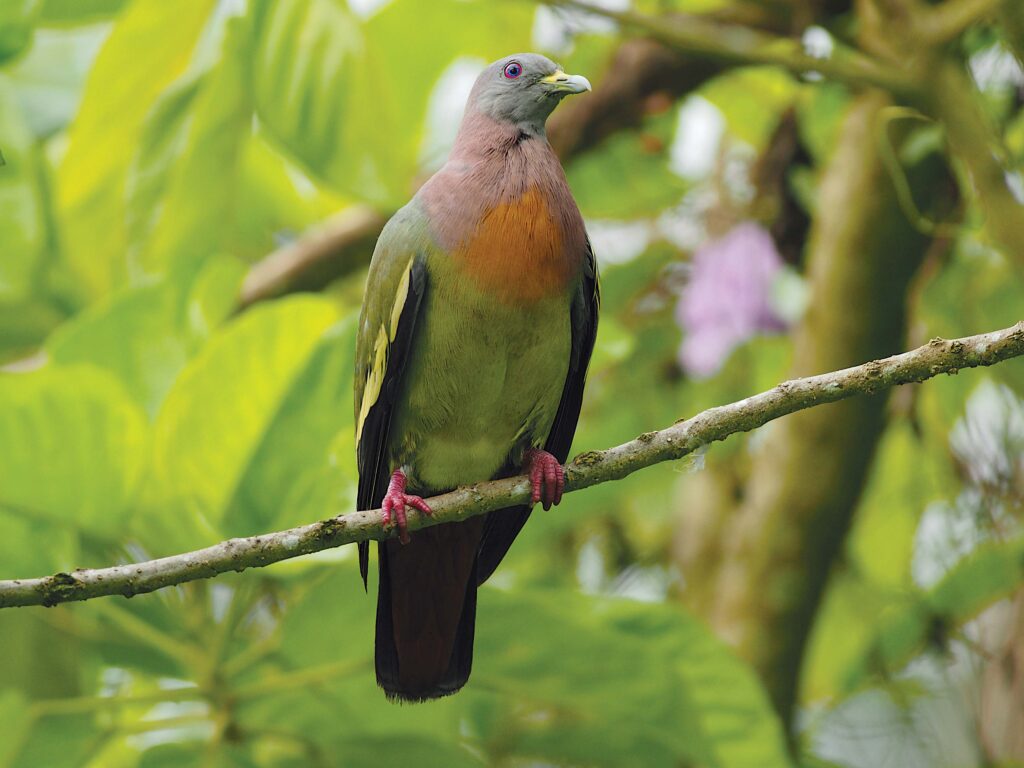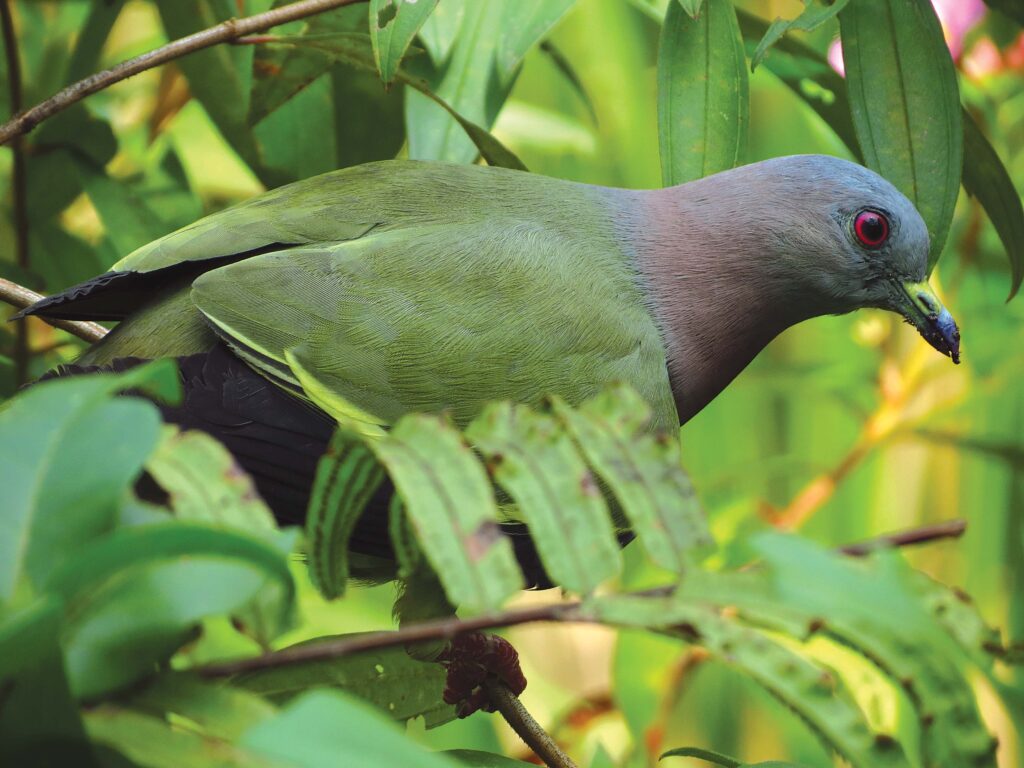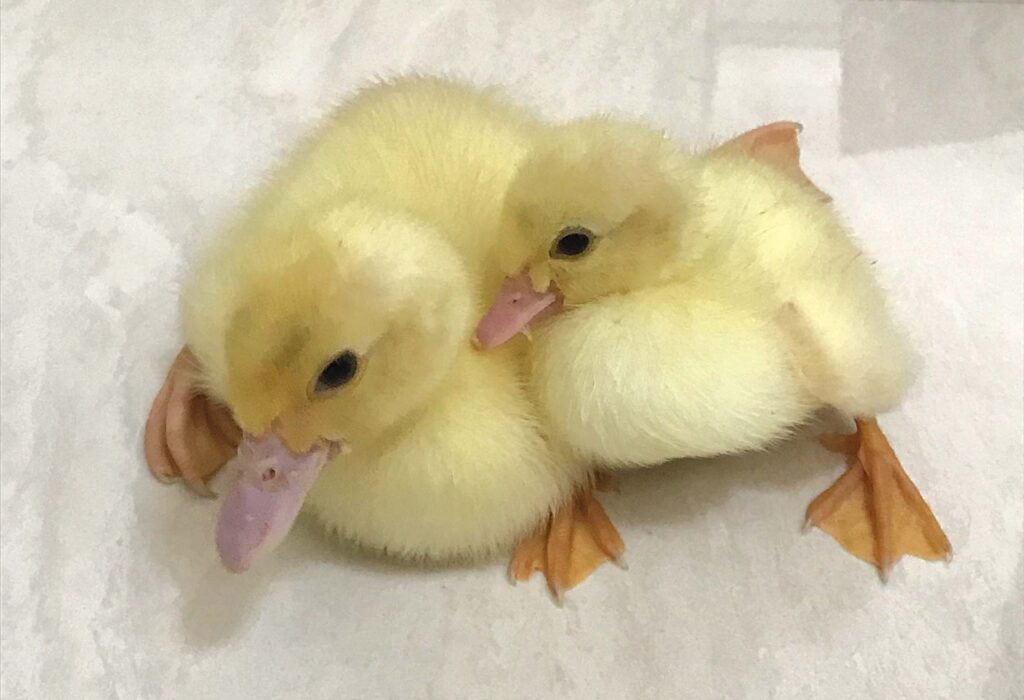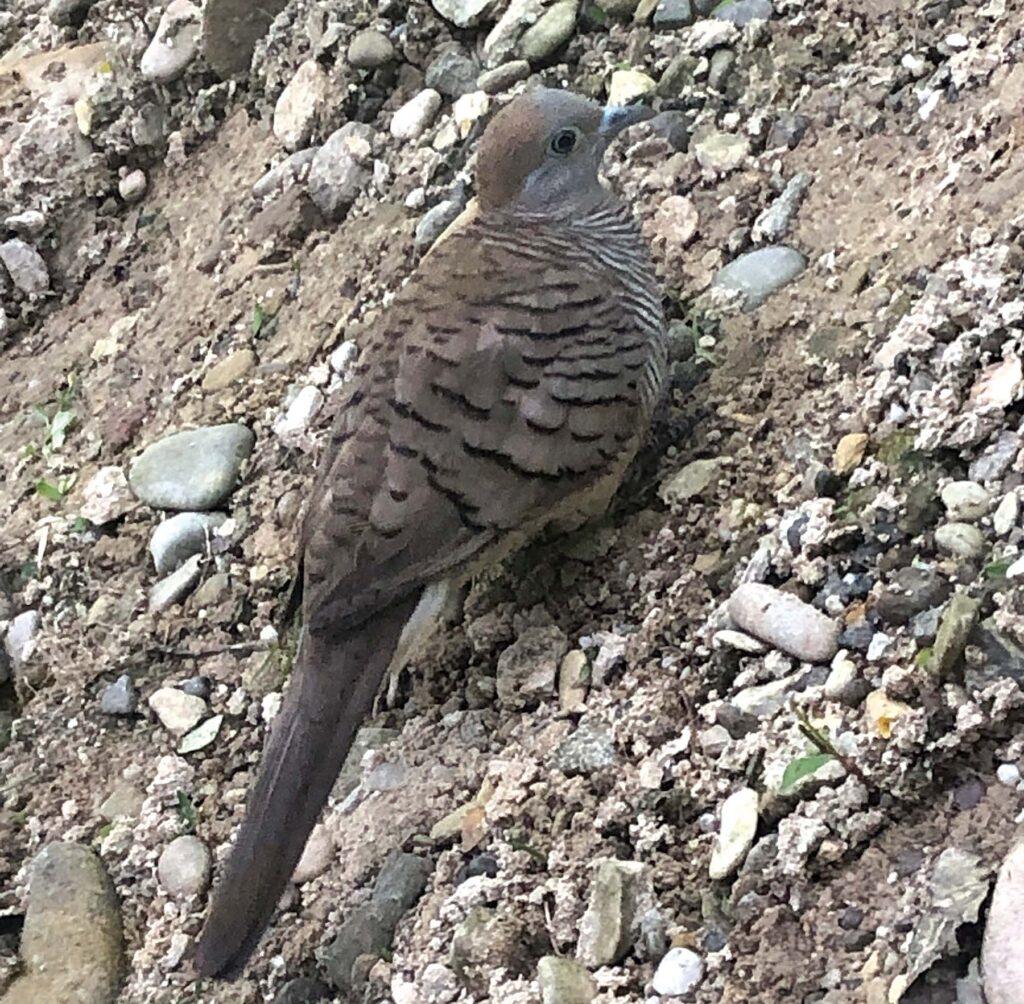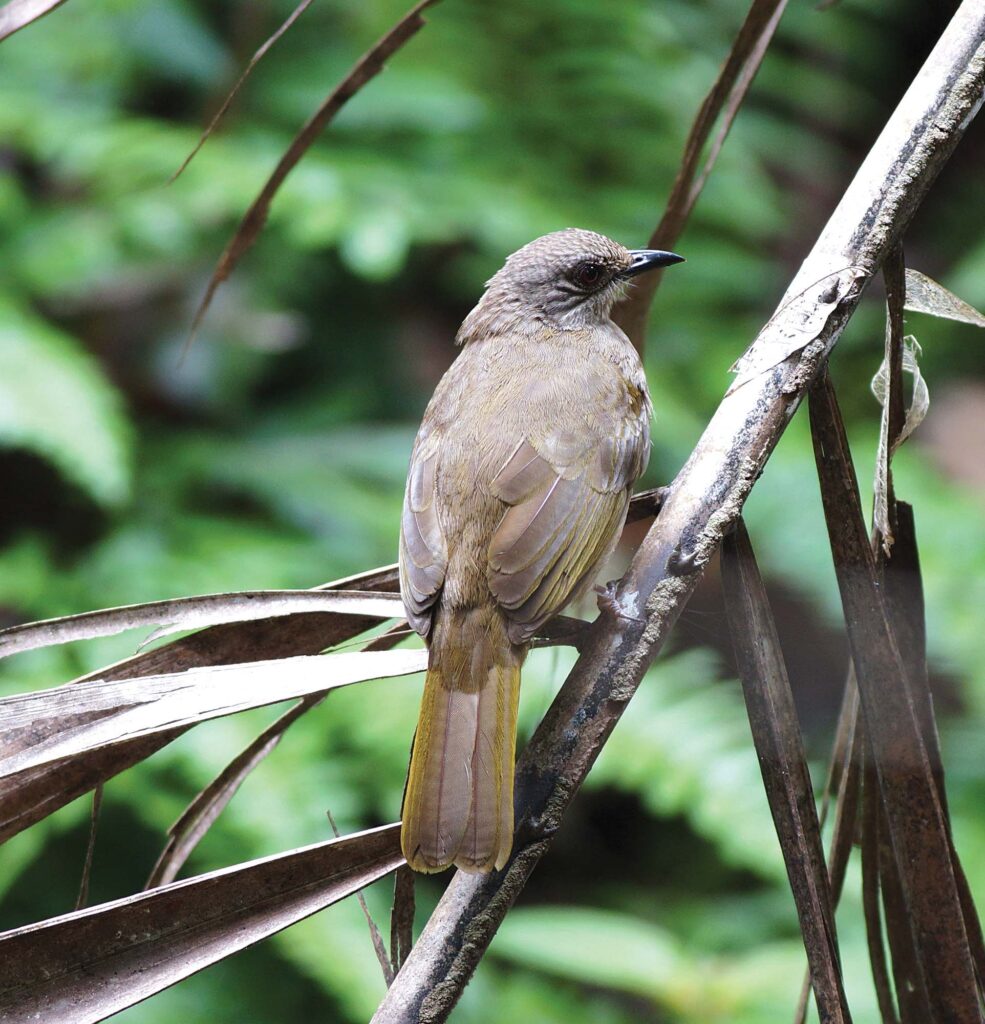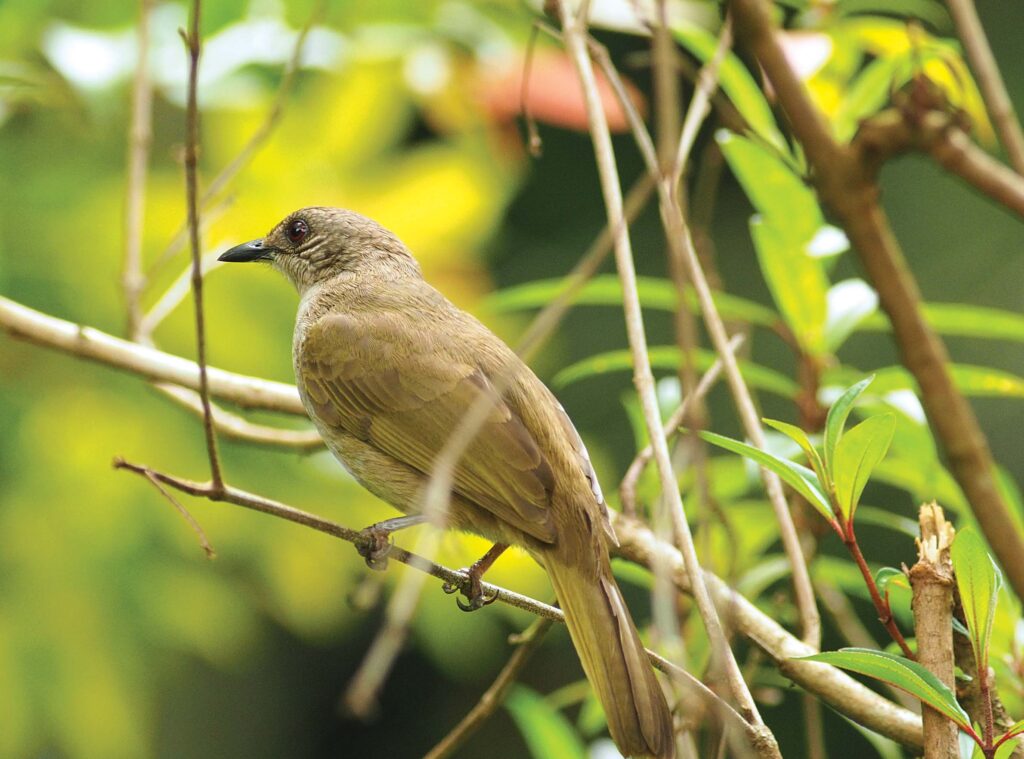BATO-BATO SA LANGIT
Moving on to a bigger size, we also have the Zebra Dove and domesticated Ducks in the area. Zebra Doves usually go for plant seeds, but the occasional Insect is also up on their list. We locals call them Bato-Bato.
During the air gun craze of the 80s and 90s, people here hunted the Kalapati (any wild pigeon), the giant Balod (Imperial Pigeon) and Labuyo (a kind of wild Chicken) close to extinction. Since Bato-bato were very abundant and often considered pests, people focused on them and hunted them relentlessly.
These Birds were used to human presence, so hunters could get really close to them. People would literally throw anything at them. They used air guns, sling shots, rocks, and traps.
Soon enough, the Bato-Bato became wary of people.
It was a good thing that during the late 1990s, the local government banned Bird hunting. It took quite a while, but the Bato-Bato did return to their friendly disposition. I could get close to one now, as close as about two meters, before they would fly away.
Of course, I had to pretend that I was not looking at them. Otherwise, they would fly to the safety of the trees, even if I were still five meters off. So, if you want to get close to a Bato-Bato, just try to snub them.
THE PARADOX BEHIND PUROK-PUROK
We have another flying omnivore around these parts, the beautiful but weird olive- winged Bulbul. This Bulbul is a very beautiful Bird whose feathers are of varying shades of green. Their size is comparable to that of a small Dove, such as the Zebra Dove.
A local told me that they called them Purok- Purok. I don’t know if this is the correct Filipino name or just one used at a locality. I think they’re weird, because they are pretty shy Birds with an uncharacteristic nesting habit. They are so shy that you cannot get close to one. They will fly away even if you are still 20 meters away. But twice already during this COVID pandemic, we have seen Bulbul pairs build their nests really close to human dwellings.
The first time was a couple years ago. A pair of Bulbul built their nest two meters away from the side door of my mother’s house. That was just weird. They built their nest on top of a metal flower pot holder similar to a giant candle stand, only that you put a flower pot on top instead of a candle. Whenever someone had to go in or out of the house, the Birds would fly away.
Instead of moving to a safer abode, the Mama Bird laid her eggs in the nest anyway. My mother and my brothers tried their best to guard the eggs from Cats and Rats, but sadly, the latter ate the eggs and the Bulbul pair abandoned the nest.
About two months ago, my garden was chosen by another Bulbul pair as their nesting site. As weird as the first incident was, this pair built their nest on a really low bush just four meters away from our gate.
The nest was only four feet above the ground and on many occasions, the Bulbul pair was scared off by people coming in and out of the gate. But as they get more comfortable with their surroundings, I could get to about a meter close to the nest without scaring them away. Because of this, I was able to observe the nest really closely.
FLEDGLINGS TRYING TO FLY
I think it was on April 29 this year that Mama Bird finally laid her two eggs. For this size, about as large as the Bato-Bato and Asian Starling, I feel that the eggs were rather large. Imagine a slightly small pingpong ball that is elongated — that’s about the size of each egg.
The incubation lasted 10 days, and as I visited the nest on May 9, I saw two very delicate babies, blind and unable to move except to wiggle.

Growing up around Chickens and Ducks, I was surprised by the speed of growth and development of the chicks. Maybe that was why the eggs were large relative to the Mama Bird’s size: It would give the chicks a boost so that they would need less time to grow.
Just a week after hatching, the chicks already had big feathers, albeit sparse. They did not go through the down phase like Chickens usually did. Instead, they grew contour and flight feathers immediately.
Only four days to a week old, the larger of the chicks flew off with her parents to the trees nearby. It was an awkward flight, but she did it anyway. She was finally up in the safety of the canopy, away from the reach of Rats and Cats.
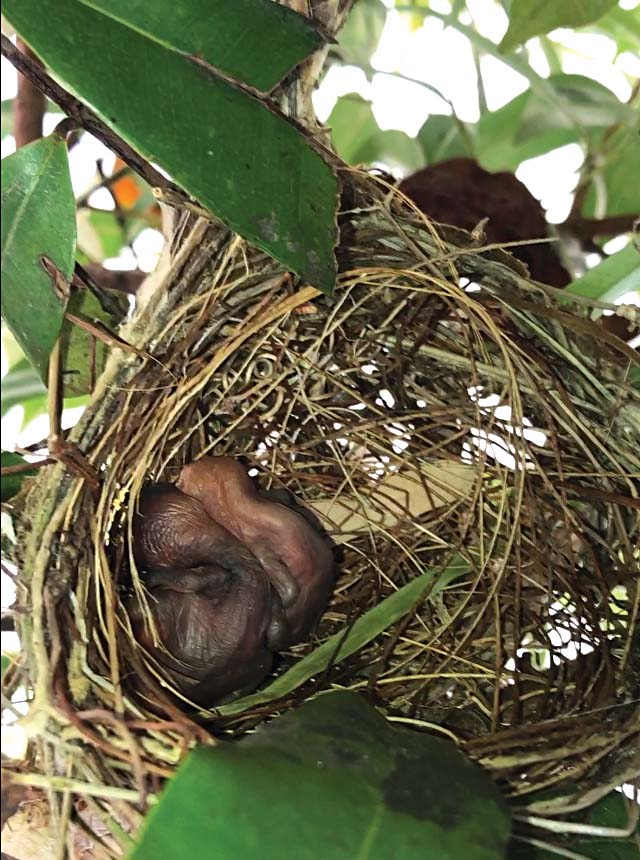
A Bulbul hatchling. 
A one-week old Bulbul hatchling.
Meanwhile, the smaller chick did try to fly, but she simply did not have enough feathers and strength to fly up to the trees. Instead of flying upwards, she could only fly forward, and she couldn’t fly past our fence.
Our area is near the Barangay MRF (read: basurahan), where there were a lot of community animals. To keep her safe, we had to intervene and pick her up from the ground to put her back in the nest.
This cycle went on for about two days. She would attempt to fly to the trees but fall short and land on the ground. We had to put her back in the nest again. The parents did visit a few times a day; I assumed she was being fed.
Finally, after two days of practice flight and strengthening, she was able to join her parents up in the trees. It was a bittersweet moment, because all of us were relieved that she was finally in a safer place, but at the same time, we were quite sad that our adopted Birdie had to spread her wings and fly, literally.

INDEPENDENT KIDS
The Bulbul reminded me of the Tabon or Scrubfowl. The Tabon would lay their egg deep in the sand of the beach. The egg was about one-fourth the size of the hen. For this reason, the hen would usually lay only one egg at a time. The amazing thing about the Tabon was that the egg would be abandoned and the chick that would later hatch would fend for themself after they dig their way out of the sand. Talk about early independence!
AWKWARD PHASE
Just recently, I discovered another pair of Bulbul fledglings on a Sampaloc tree just behind my office building. I was just having a light stroll to take a break from the hourly grind when I heard their very soft and gentle “coo-coo-coo-coo”.
Just a couple of months after my experience with the other Bulbul family, their call was familiar and very soothing. As I looked up the tree, sure enough, there they were, the Bulbul Siblings. These two were in a more mature state. Their feathers were no longer ruffled, but not yet the vivid green of their mature counterparts.
It is amazing that these Birds, at only 10 and 12 days old, were already able to fly. Granted, the flight time was very short and the manner, very awkward, but it was still something. Similar to other flight birds, the fledglings did not look like their parents yet. They were still somewhat in the “ugly Duckling” stage.
